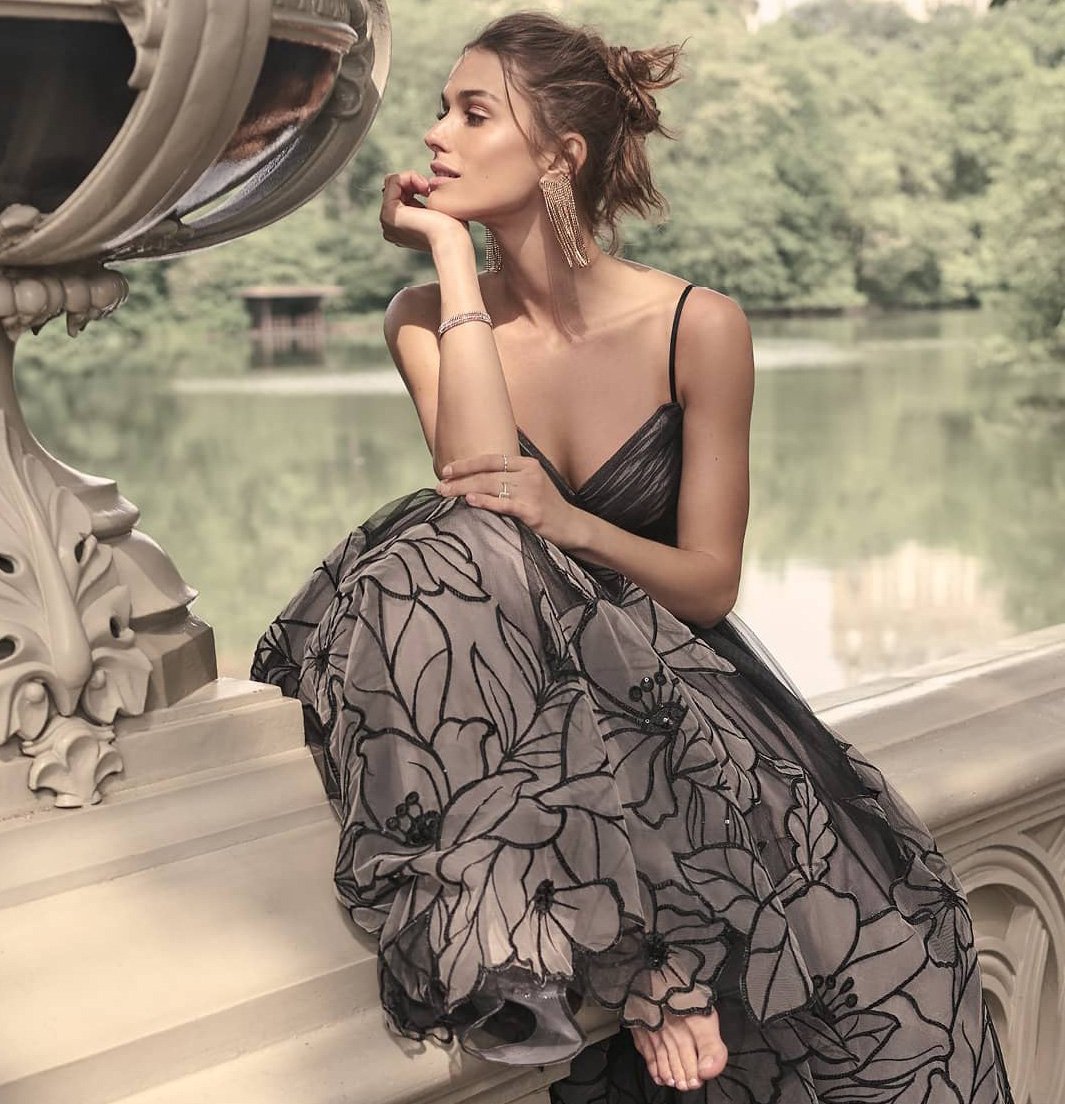
Black vs White Wedding Dress: A Designer’s Perspective 2026
For generations, brides walked down the aisle in white without question. Today, more and more women pause and ask something beautifully radical: “Should I choose a black wedding dress instead?”
As a designer crafting couture gowns for Bridal and Tuxedo Galleria, I witness this moment of decision every week — the quiet, powerful debate of black vs white wedding dress in a bride’s mind. It’s not just a style question. It’s about identity, heritage, mood, and the kind of story she wants her wedding to tell.
In this article, I’ll walk you through the emotional, cultural, and design-driven sides of black vs white wedding dress choices — from fabrics and silhouettes to symbolism and styling — so you can make a decision that feels profoundly you.

Tradition Meets Rebellion: Why Brides Now Ask “Black vs White Wedding Dress?”
For a long time, the answer to “What color is your wedding dress?” was simply assumed: white. White symbolized purity, new beginnings, and classic romance. But modern brides are more self-aware and expressive than ever.
When brides come to Bridal and Tuxedo Galleria, they often arrive with screenshots and Pinterest boards full of contrasting looks: minimalist ivory gowns and dramatic charcoal or jet-black pieces. They are actively comparing black vs white wedding dress aesthetics, asking:
- Which color reflects my personality?
- Which looks better for my venue and lighting?
- Which will make me feel most confident in my photos?
For some brides, a white gown still represents childhood dreams and timeless elegance. For others, a black dress feels like grounding, power, sophistication, and a little bit of mystery. The conversation around black vs white wedding dress is really a conversation about how brides see themselves in the world.

The Symbolism Behind White and Black in Bridal Fashion
In Western culture, the white wedding dress became popular in the 19th century, especially after Queen Victoria wore a white gown for her wedding in 1840. Before that, brides often wore their “best dress” in any color. Victoria’s choice, widely photographed and illustrated, associated white with purity, elegance, and royal romance. Over time, white came to symbolize innocence, new beginnings, and the ideal of a fairytale wedding. It also reflected social status, as white fabric was harder to keep clean and signaled privilege.
In contrast, black has carried more complex and sometimes contradictory meanings. In many Western traditions, black is associated with mourning, formality, and solemn occasions. It became the color of seriousness, depth, and sophistication—seen in tuxedos, evening gowns, and formalwear. In some cultures, however, black is also viewed as protective or powerful, absorbing negativity and symbolizing inner strength.
When brought into bridal fashion, black shifts from “mourning” to mystique and confidence. Modern brides who choose black often want to express individuality, independence, and a non-traditional view of marriage. They see black as timeless, chic, and emotionally grounded rather than dark or unlucky.
Globally, color meanings can differ dramatically. In parts of Asia, for example, red, not white, has long symbolized joy and prosperity for brides, while white may be linked to mourning. This shows that the symbolism of white and black in bridal fashion is mostly cultural, not universal.
Today’s brides are increasingly aware of these layers of meaning. Choosing white or black isn’t only about trend—it’s a statement of identity, values, and the kind of story they want their wedding to tell.
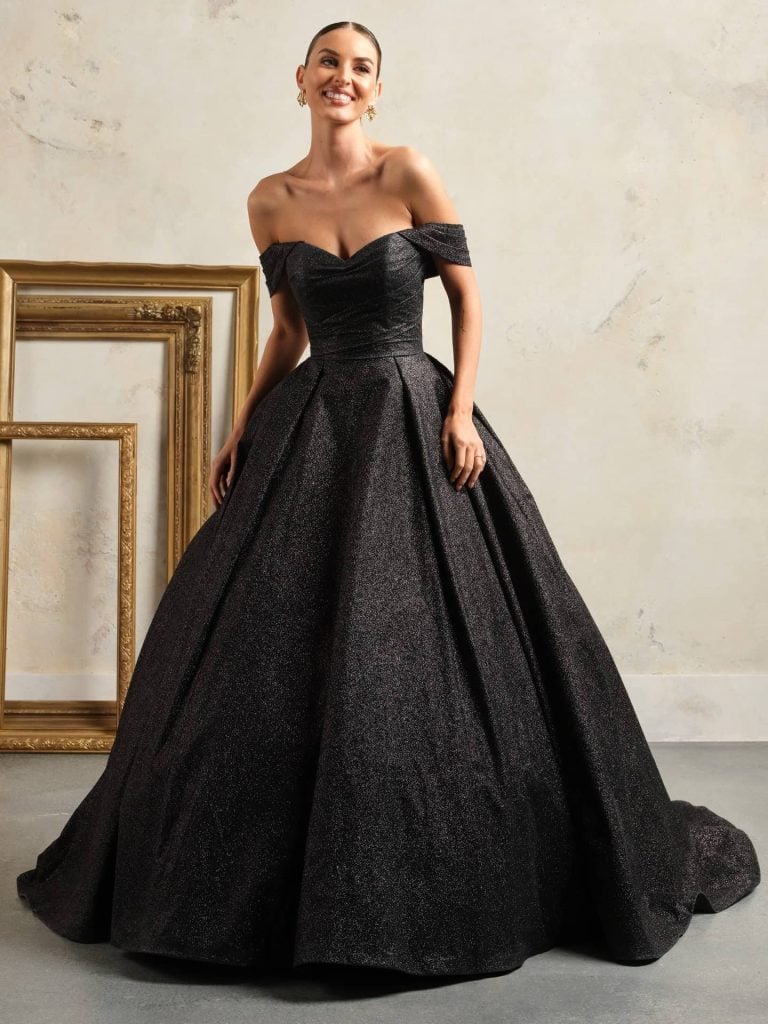
White: A Canvas of Light
A white wedding dress is like a blank page filled with light. It often symbolizes:
- Innocence and a fresh chapter
- A classic fairy-tale image
- Softness and romantic tradition
White beautifully reflects natural light, which is why it has been beloved for daytime ceremonies, garden weddings, beach weddings, and traditional church settings. Many brides feel that a white gown connects them to their mothers, grandmothers, and generations of weddings before theirs.
Black: Depth, Power, and Modern Romance
A black wedding dress tells a different story. In modern fashion, black represents:
- Confidence and self-possession
- Drama, sophistication, and edge
- An artistic or non-traditional spirit
When brides compare black vs white wedding dress options, those drawn to black usually want their wedding to feel like an editorial moment — cinematic, intentional, and unforgettable. Black doesn’t mean sadness; in couture, black is luxury. Think of the little black dress, tuxedos, opera gowns — these are garments of power.
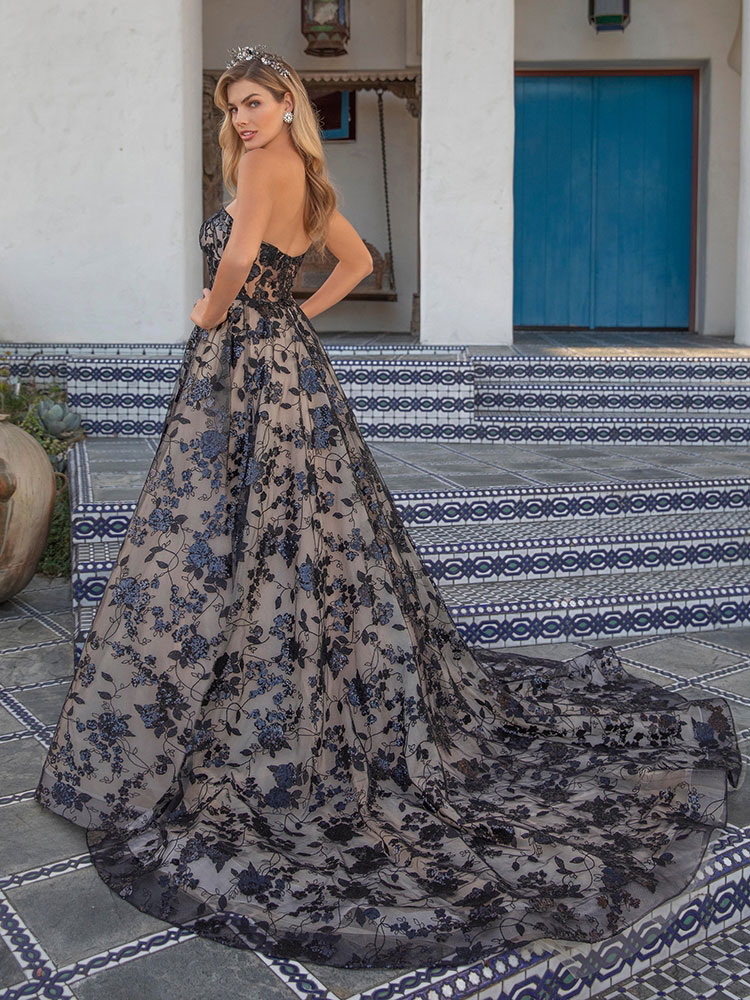
How Designers Approach Black vs White Wedding Dress Construction
From the design table, black vs white wedding dress decisions affect everything: fabric choice, structure, embroidery, and even how the gown behaves under camera flashes.
1. Deep-Dive Consultation
First, we talk. I ask about your venue, lighting, theme, personal style, and how you want to feel in your dress. This is where we decide whether your vision leans more toward a white gown, a black gown, or a blend of both.
2. Choosing the Silhouette
Next, we choose the silhouette that flatters your body and matches the mood:
- For white: ball gown, A-line, and romantic fit-and-flare are common.
- For black: sleek mermaid, structured sheath, or modern column often highlight the drama.
The black vs white wedding dress decision influences how sculpted or airy the structure should be.
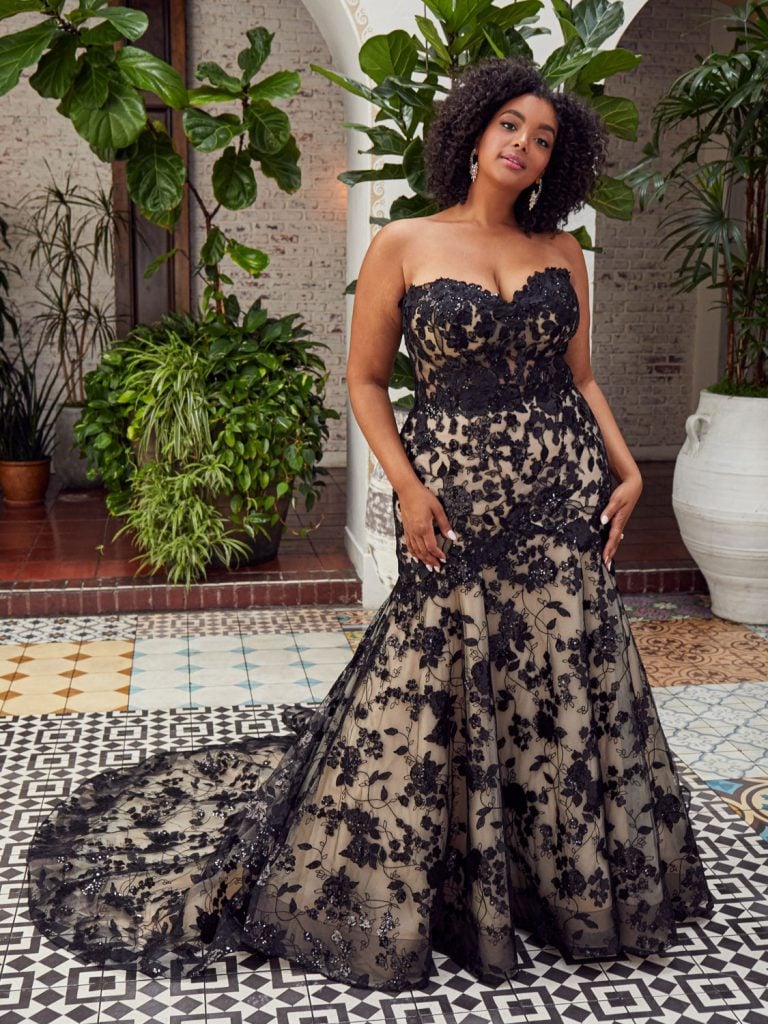
3. Selecting Fabrics by Color
Fabrics behave differently in each color:
- White gowns often use tulle, chiffon, organza, lace, light mikado, and soft satin to capture light and softness.
- Black gowns usually rely on richer or more structured materials like duchess satin, crepe, layered tulle, and even velvet to avoid looking flat on camera.
We drape fabric swatches in both colors against your skin and under similar lighting to your venue.
4. Planning Structure and Support
Then we design the internal architecture: boning, corsetry, cups, and seams.
- In white, structure is often hidden for a soft, ethereal look.
- In black, we may emphasize structure, using visible seams and paneling to sculpt the body, since darker tones highlight lines and shapes.
5. Designing Details and Embellishments
This is where a black vs white wedding dress really separates in personality:
- On white, lace motifs, beadwork, and pearls create subtle dimension.
- On black, we focus on texture and contrast: matte vs shine, 3D florals, tonal beading, metallic or crystal accents so details don’t disappear.
If you’re between the two, we might add black lace on white, white embroidery on black, or smoke-gray layers for a soft transition.
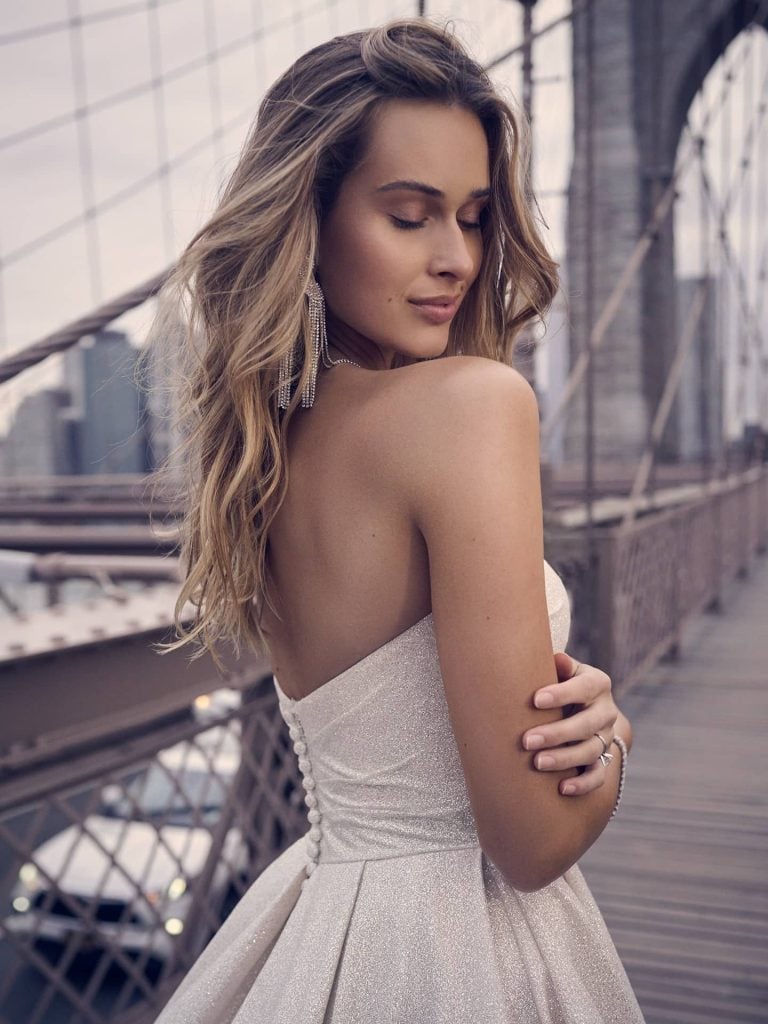
6. Considering Photography and Lighting
Before cutting final fabric, we think about your photos:
- White needs detail mapping so lace doesn’t blow out in bright light.
- Black needs texture and layering so it doesn’t read as a solid dark block.
Design decisions—like where to place shine, matte, or transparency—are made with the camera in mind.
7. Fittings and Refinement
During fittings, we refine:
- Hem length, train shape, and bustle options
- Balance of coverage vs skin (neckline, back, sleeves)
- Placement of appliqués and beading so both black and white areas read beautifully in motion.
8. Final Styling Vision
Lastly, we plan how the dress will work with veil, shoes, and accessories:
- White: romantic veils, soft pearls, delicate metals.
- Black: bold jewelry, dramatic veils (black or smoky), statement shoes.
By the end of this process, the black vs white wedding dress question is no longer abstract. It’s a fully realized design that reflects your body, your story, and the atmosphere of your day.
Fabric and Texture
- White Gowns
White works beautifully with airy fabrics: tulle, organza, chiffon, light mikado, soft satin. Lace motifs stand out with gentle shadow. Beading reflects light and creates a subtle shimmer. A white wedding dress is often about soft gradients of light and volume. - Black Gowns
Black loves structure and contrast. Velvet, duchess satin, structured crepe, and layered tulle look stunning in black. 3D floral appliqués, tonal beading, and matte vs shine contrasts become crucial. In a black wedding dress, texture is everything — it’s what keeps the gown from looking flat in photographs.
When I design for Bridal and Tuxedo Galleria, I always consider where the gown will be worn. For indoor evening ceremonies, black can look like liquid, sculpted shadow. For outdoor daytime weddings, white reflects the sun and feels luminous. So the black vs white wedding dress choice starts with both mood and environment.
Body Shape, Skin Tone, and the Art of Highlighting Your Best Features
One of the most frequent questions we hear is: “Will a black wedding dress be flattering on me?” The answer is almost always yes — and the same goes for white.
Read More about black wedding dress
How White Interacts with Form
- White can emphasize volume, so for ball gowns and princess silhouettes, a white wedding dress looks dreamy and expansive.
- On camera, white can soften edges and create a gentle glow around the bride.
- For brides with deeper skin tones, white can create a striking, angelic contrast.
How Black Shapes the Silhouette
- Black visually slims and sharpens lines, which works beautifully with mermaid, sheath, fit-and-flare, and modern column gowns.
- Black can emphasize structure — strong seams, corsetry, and architectural shapes stand out more clearly.
- For fair skin tones, black creates a dramatic contrast. For deeper skin tones, black can create a regal, almost sculptural effect.
In the black vs white wedding dress conversation, there is no universal answer for “which is more flattering.” It’s about which color, in the right fabric and cut, makes you stand in front of the mirror and think: “Yes. This is me.”
Venue, Theme, and Season: Where Each Color Shines
Another key part of black vs white wedding dress planning is your setting.
When White Steals the Show
A white wedding dress is magical for:
- Garden ceremonies, vineyards, and beach weddings
- Light, airy, pastel color palettes
- Morning or early afternoon timelines
- Traditional religious ceremonies
White harmonizes easily with florals, pastel bridesmaid dresses, and classic décor. It’s versatile and rarely feels out of place.
When Black Takes Center Stage
A black wedding dress thrives in:
- Evening or candlelit ceremonies
- Urban lofts, historic venues, art galleries, rooftop celebrations
- Fall and winter weddings with moody florals and rich décor
- Themes like modern luxe, gothic romance, black-tie, or old-Hollywood
When brides weigh black vs white wedding dress options and tell me their wedding is in a downtown industrial space with string lights and deep red florals, black often becomes a seamless, stunning choice.
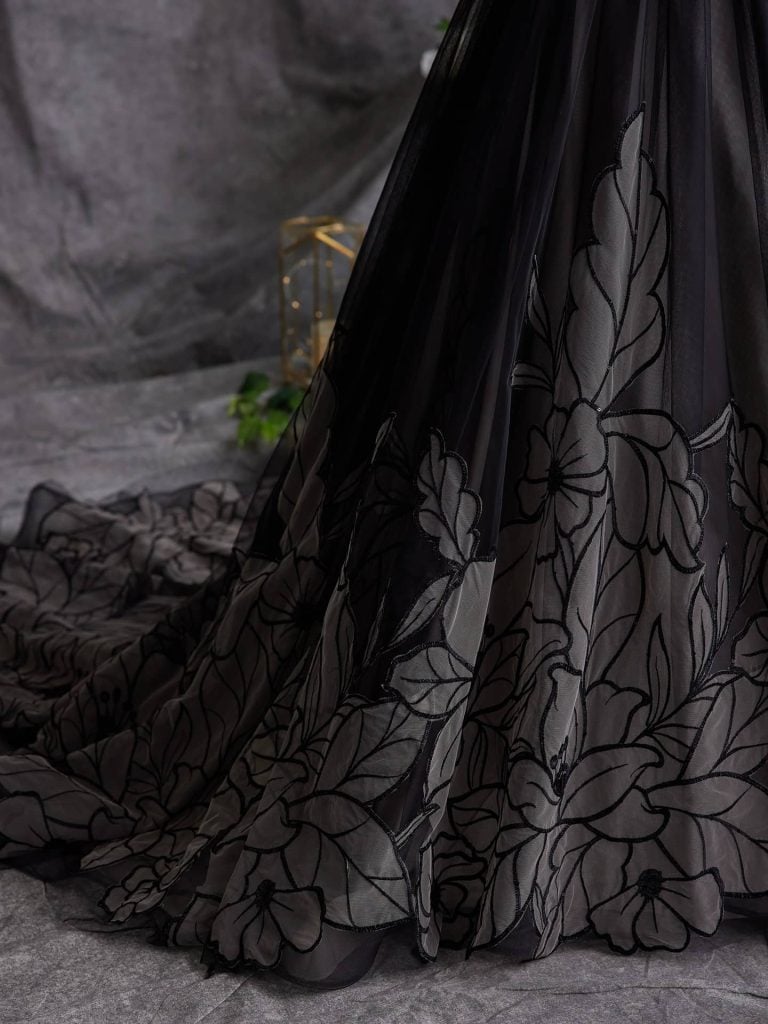
Styling Black vs White Wedding Dress: Veils, Accessories, and Details
Color is just the beginning. The details you layer on top turn your gown into your gown.
Veils and Headpieces
- With a white wedding dress, traditional cathedral veils, lace-edged veils, or pearl-dotted tulle create romance and softness.
- With a black wedding dress, you have options: a black veil for full dramatic impact, or a soft, smoky gray veil for a transitional look. Some brides choose a white or ivory veil over black to play intentionally with the black vs white wedding dress contrast.
Jewelry & Shoes
- White gowns pair beautifully with classic pearls, rose gold, or vintage-inspired pieces.
- Black gowns love bold metals — gold, silver, or mixed metals — and gemstone accents like emerald, garnet, or onyx.
Shoes are another subtle way to navigate black vs white wedding dress styling. A white gown with black heels or a black bow creates a chic, modern twist. A black gown with metallic heels feels luxe and evening-ready.
Exploring Different Colors of Wedding Dress for Modern Brides
When brides begin exploring different colors of wedding dress options, many discover that color can tell their story just as powerfully as the silhouette. While white remains the classic choice in Western traditions, today’s bridal fashion embraces blush, champagne, nude, soft blue, and even bold shades like red or black. Each tone carries its own mood, cultural roots, and visual impact in photos.
Soft different colors of wedding dress like ivory, champagne, and nude are ideal for brides who want a gentle alternative to bright white. These shades flatter many skin tones, photograph beautifully in natural light, and give a romantic, vintage-inspired feel. Blush and dusty rose add a hint of warmth and femininity, perfect for garden weddings and modern fairytale themes.
For brides who want symbolism and drama, deeper hues come into play. Black can represent strength, elegance, and individuality, especially in evening or city weddings. Red is traditional in many cultures, symbolizing joy, luck, and prosperity. Soft blue or silver can suggest serenity, modernity, and a subtle “something blue” woven into the gown itself.
Choosing among different colors of wedding dress is ultimately about personality and setting. The venue, season, décor, and lighting all influence how a color will look and feel. A candlelit ballroom can make a black or deep red gown glow with intensity, while a sunlit garden enhances blush, champagne, and pastel tones.
Rather than asking what a bride “should” wear, modern designers encourage her to ask: Which color feels most like me? By considering cultural meaning, emotional resonance, and the wedding atmosphere, brides can use color to transform their gown into a deeply personal statement.
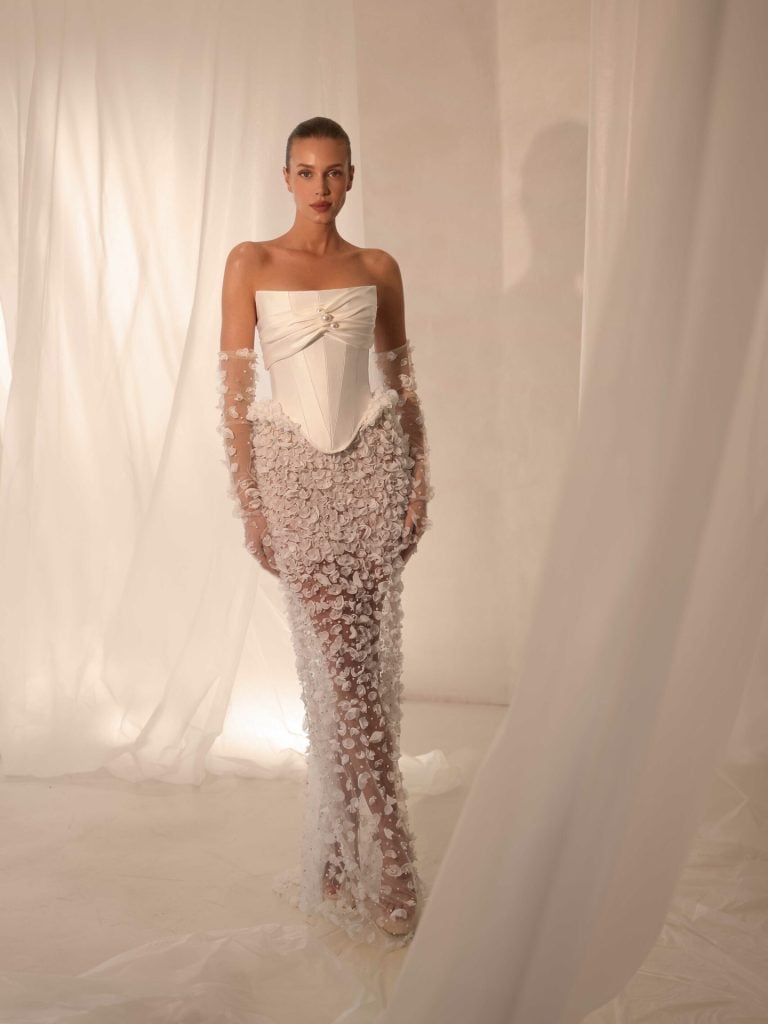
Best Color for Wedding Dress 2026 Trends
Choosing the best color for your gown is no longer a simple black-and-white decision. Modern brides are asking a deeper style question: how does the classic debate of black vs white wedding dress reflect who I really am? In 2026, bridal fashion leans into personalization, which means your color choice should match your personality, venue, and vision more than any old rule.
For some brides, the timeless glow of ivory and soft white still wins the black vs white wedding dress conversation. White and off-white shades photograph beautifully in daylight, pair effortlessly with romantic florals, and connect you to generations of traditional bridal imagery. If you dream of a garden ceremony, a coastal wedding, or a classic church aisle moment, a sculpted white or pearl gown may feel like the truest expression of your story.
Other brides feel undeniably themselves in deeper tones, and that is where the modern appeal of black vs white wedding dress trends becomes exciting. In candlelit venues, rooftop celebrations, and evening receptions, black creates graphic drama, sharp silhouettes, and an editorial mood that feels bold, confident, and unforgettable. Paired with metallic accessories, statement veils, or dark florals, a black gown turns your entrance into a cinematic moment.
Many 2026 collections at top ateliers also soften the contrast inside the black vs white wedding dress spectrum. Designers play with layered champagne, smoke, and soft gray under white tulle, or add black lace, bows, and embroidery to ivory bases. This gives you the emotional comfort of a bridal look with the personality of fashion-forward styling.
Ultimately, the most important part of the black vs white wedding dress decision is how you feel when you see yourself in the mirror. Choose the color that makes your shoulders drop, your smile widen, and your confidence rise—that shade, whether light or dark, is the one that belongs in your wedding photos forever. When you work with a designer or boutique, bring inspiration photos and be honest about the colors you actually wear and love. Their guidance, plus fabric draping and real lighting tests, will help you see which shade truly enhances your natural beauty.
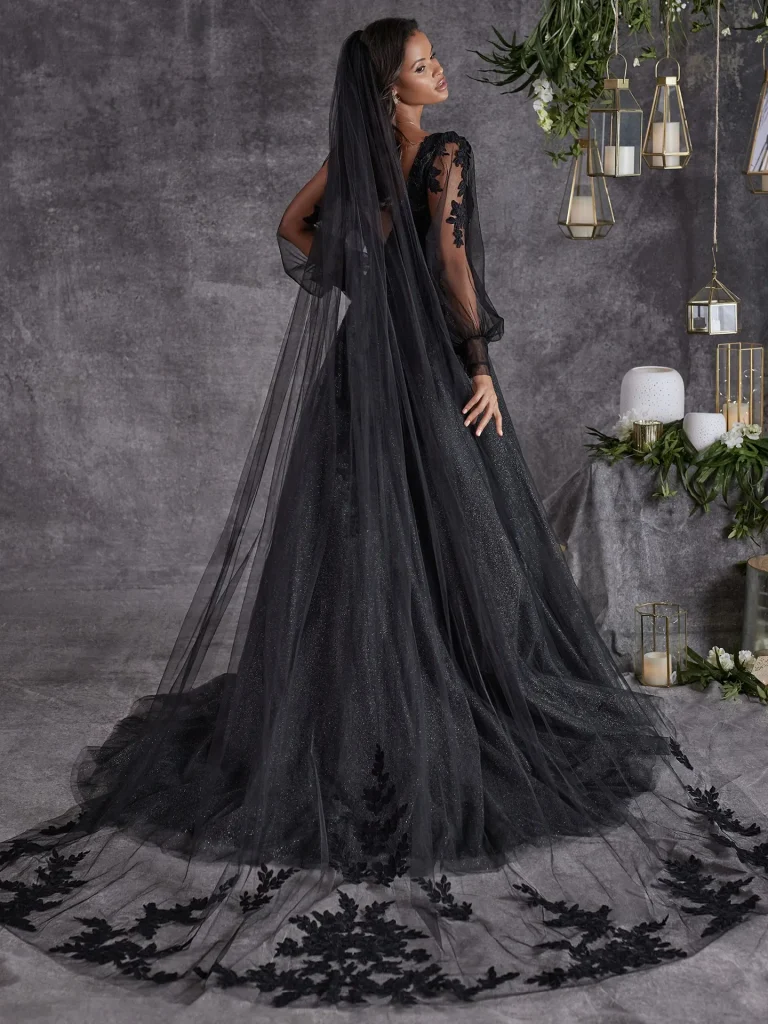
Personality Types: Who Chooses Black vs Who Chooses White?
When I meet brides at Bridal and Tuxedo Galleria, I notice a pattern in the black vs white wedding dress decision.
Brides Who Tend to Choose White
- They’ve dreamed of their wedding day since childhood.
- They often love classic romance movies and royal weddings.
- They want their photos to feel timeless and “bridal” in the most traditional sense.
White aligns with their idea of stepping into a story they’ve held for years.
Brides Who Tend to Choose Black
- They see their wedding as an extension of their personal style, not a separate “costume.”
- They dress in black often in their everyday life and feel their most confident in deeper tones.
- They want their wedding to feel editorial, cinematic, or a little unexpected.
For these brides, the black vs white wedding dress question is less “Is black okay?” and more “Why wouldn’t I wear what feels like my true self?”
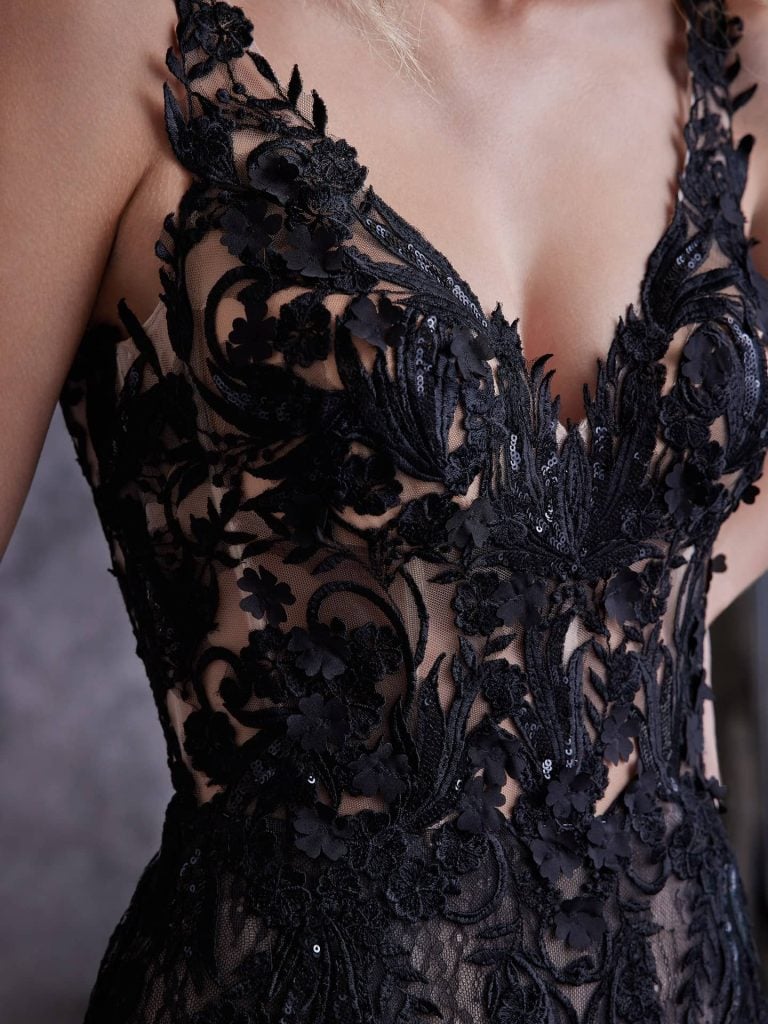
The Beauty of In-Between: Combining Black and White
You don’t always have to choose one side of the black vs white wedding dress spectrum. Some of the most unforgettable gowns we create at Bridal and Tuxedo Galleria combine both.
Ideas include:
- White gown with black lace appliqués climbing up the bodice and sleeves
- Black corset bodice with a soft white or champagne skirt
- White dress with black beading, embroidery, or a black sash at the waist
- Layered tulle where the underlayer is a deep smoke or charcoal and the top is soft ivory
These designs satisfy brides who adore both sides of black vs white wedding dress aesthetics. They allow tradition and individuality to coexist in one gown.
Photography Considerations: How Cameras See Black vs White Wedding Dress
As a designer, I always think about how the gown will live in photos — because your wedding dress doesn’t just exist for one day. It exists in the images you’ll revisit for a lifetime.
White in Photos
- A white wedding dress reflects light, which can be magical but also tricky if the photographer needs to balance bright fabric with softer skin tones.
- Details like lace and beading need thoughtful lighting so they don’t get blown out in very bright daylight.
Black in Photos
- A black wedding dress absorbs light, creating drama and depth.
- Photographers often love black because it allows them to play with shadows, contrast, and composition in a more editorial way.
When brides ask me about black vs white wedding dress photography, I always recommend: talk to your photographer. Share your color choice early so they can plan the right lenses, lighting, and editing style.

Emotional Confidence: How You Feel Matters More Than Color
In every black vs white wedding dress discussion, there’s a moment where the bride stops looking at the fabric and starts noticing her own expression in the mirror.
- In white, does she see a softer, dreamier version of herself she loves?
- In black, does she stand taller, speak louder, smile wider?
The real answer to black vs white wedding dress is: choose the color that lets your soul breathe more freely. The dress color that makes your shoulders relax, your posture lift, and your eyes light up—that’s the right choice.
As a designer, I can adjust necklines, restructure skirts, and change embellishments. But I cannot design the feeling you have when you know a dress is “the one.” That feeling comes from the connection between the bride, her story, and the gown — whether it’s white, black, or somewhere in between.
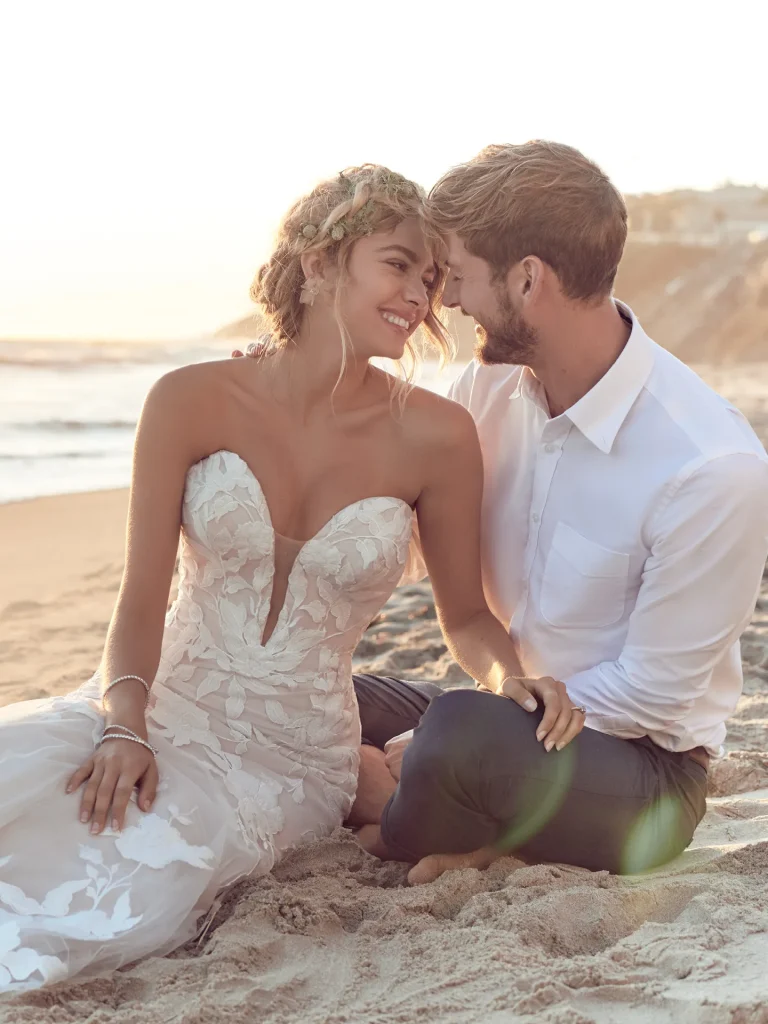
FAQ about Black Wedding Dress Vs White wedding dress
1. What is the main design difference between a black vs white wedding dress?
The biggest difference is how each color handles light and structure. White reflects light and often looks softer and more ethereal, while black absorbs light and highlights seams, shapes, and textures. Designers use different fabrics, layering, and details to make each color look rich and dimensional.
2. Do designers use different fabrics for black vs white wedding dress designs?
Yes. White gowns often use light, airy fabrics like tulle, chiffon, organza, and soft satin. For black gowns, designers tend to choose richer or more structured materials like crepe, duchess satin, layered tulle, or even velvet so the dress doesn’t look flat in photos.
3. Is it harder to add lace and beading on a black wedding dress?
It’s not harder, but it must be more intentional. On white dresses, lace and beading naturally stand out. On black gowns, designers rely on texture (matte vs shine), 3D appliqués, and tonal or metallic beading to ensure the details are still visible and impactful.
4. How does the black vs white wedding dress choice affect photography?
White dresses can sometimes lose detail in very bright light, so designers place lace and texture carefully. Black dresses can appear too dark if not layered correctly, so we add dimension through fabric and embellishment. Both are designed with lighting and photography in mind.
5. Can I combine both colors in one gown instead of choosing only black or white?
Absolutely. Many brides choose a blend—such as a white gown with black lace, a black bodice with a soft ivory skirt, or smoky underlayers beneath white tulle. This lets you enjoy the drama of black vs white wedding dress design in a single, custom look.
Final Thoughts: Black vs White Wedding Dress – Your Story, Your Shade
In the end, black vs white wedding dress is not a debate with a winner. It’s a spectrum of expression, and you belong somewhere along it — in glowing ivory, in inky velvet, or in a breathtaking combination of both.
White honors tradition. Black honors boldness. Both can honor you, if chosen intentionally.
If you’re a bride who feels torn between black vs white wedding dress choices, I invite you to see and feel the difference in person. At Bridal and Tuxedo Galleria, we’ll walk you through silhouettes, textures, and tones until the mirror shows you not just a dress, but your truest bridal self.
When you say yes to your gown — whether white, black, or a beautiful intersection of the two — you’re not just choosing a color. You’re choosing the way your story will live in your memory and in every photograph for years to come.



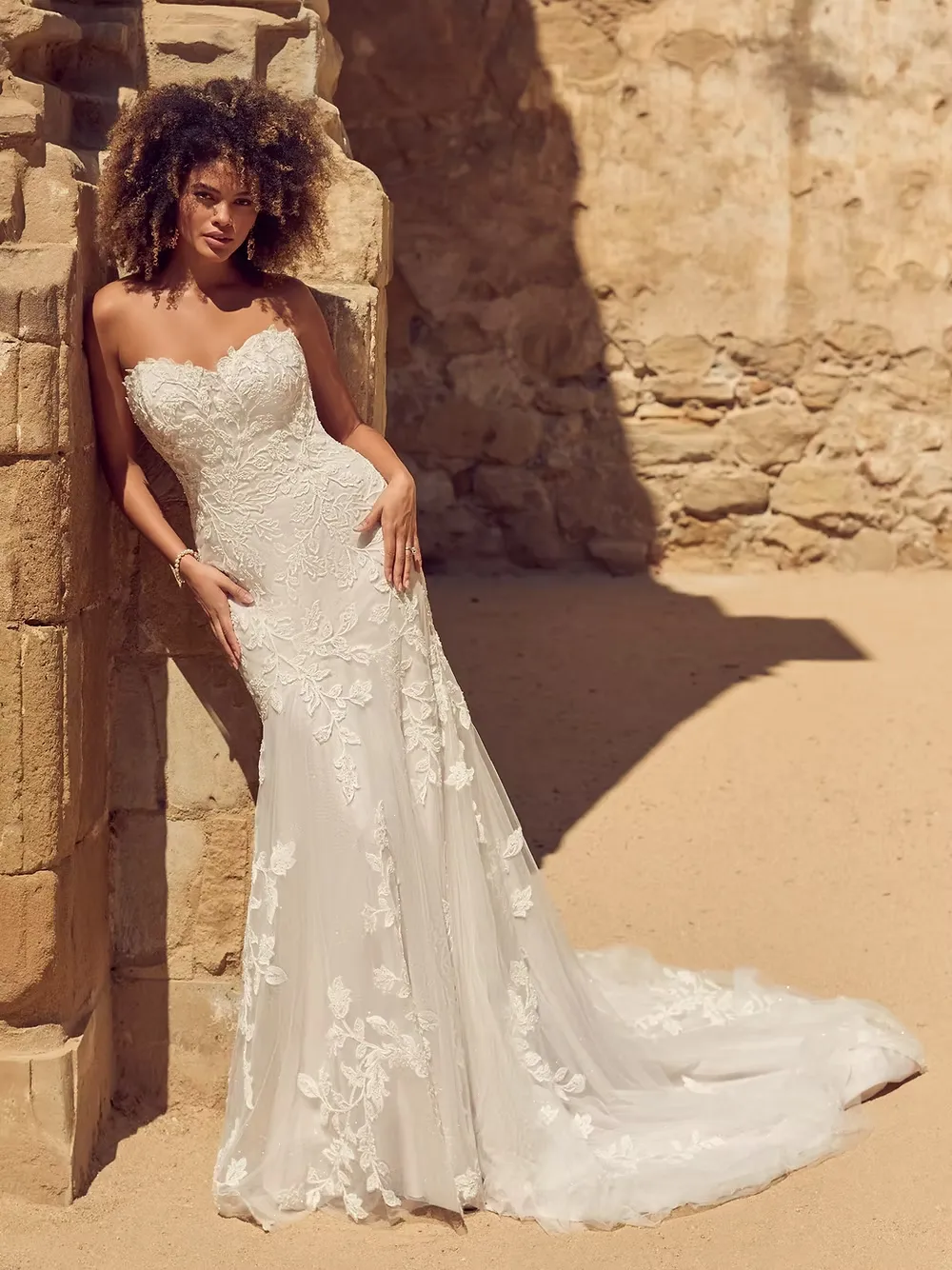
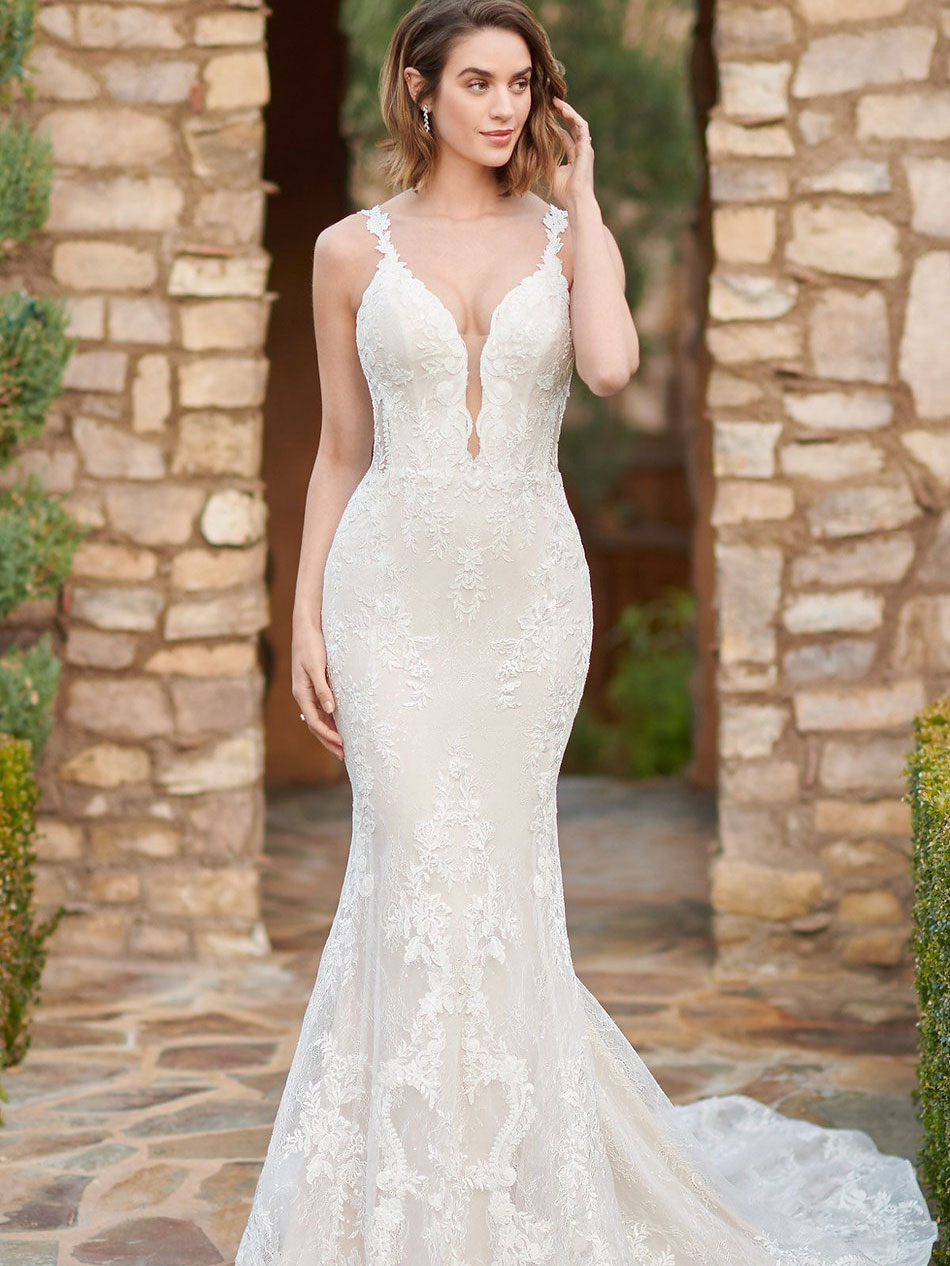
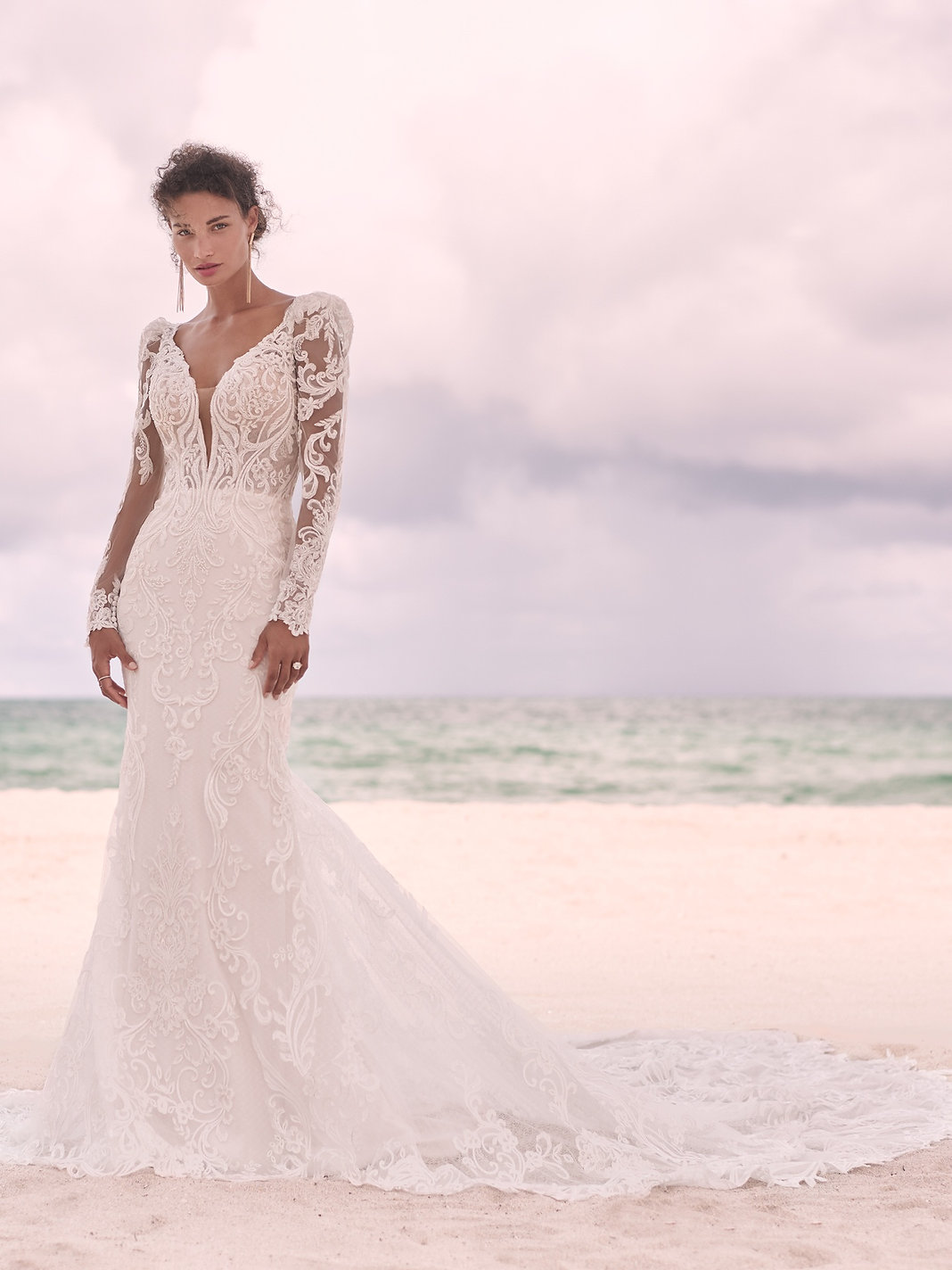

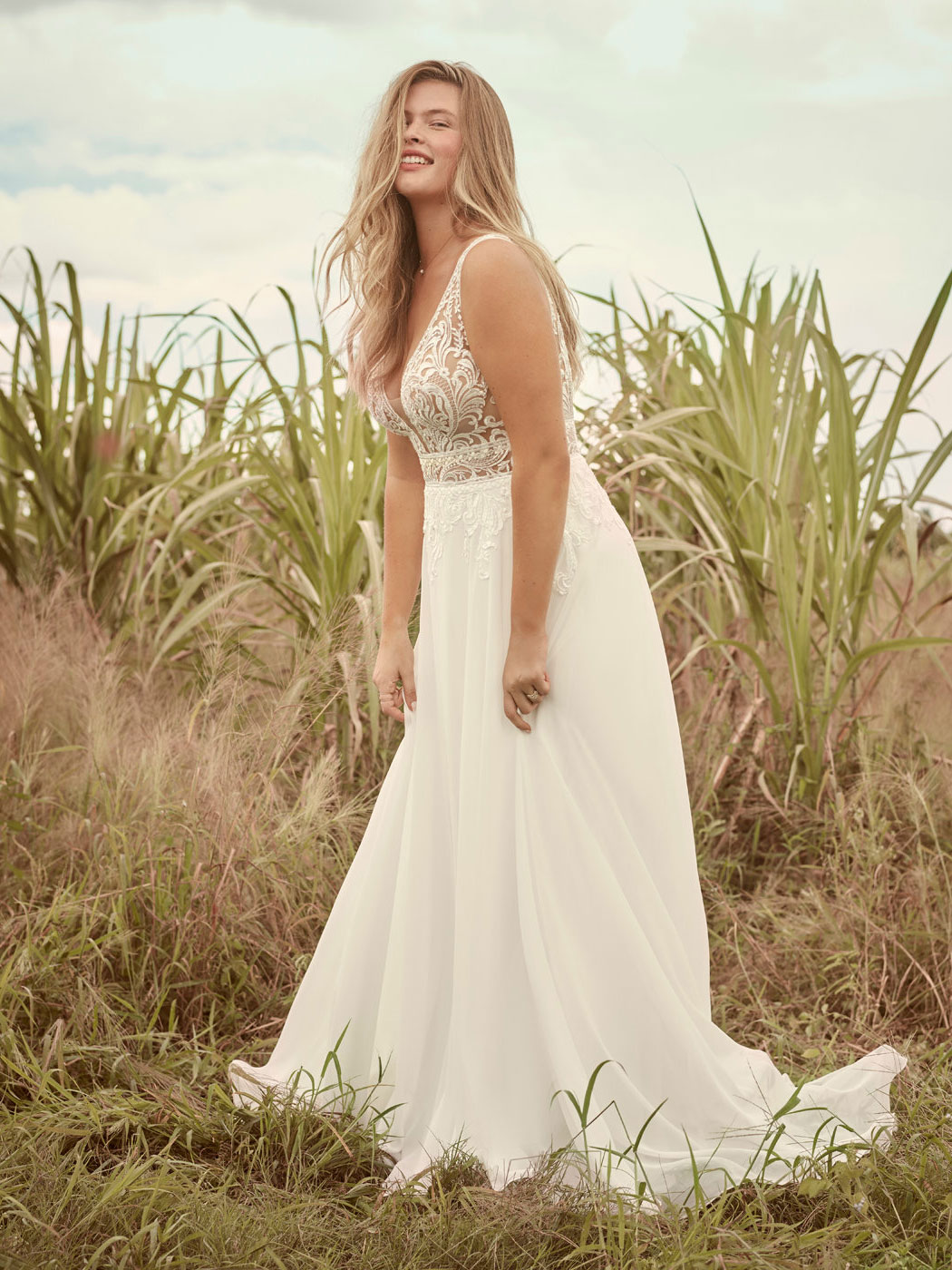
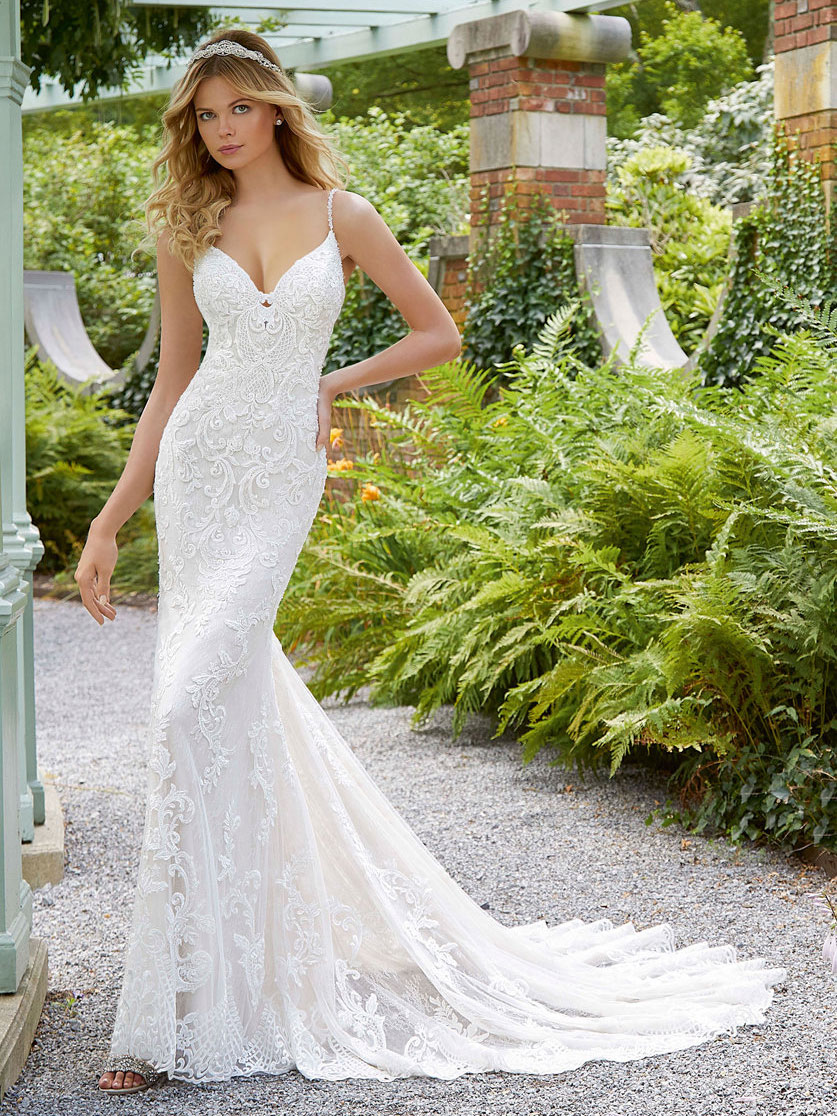
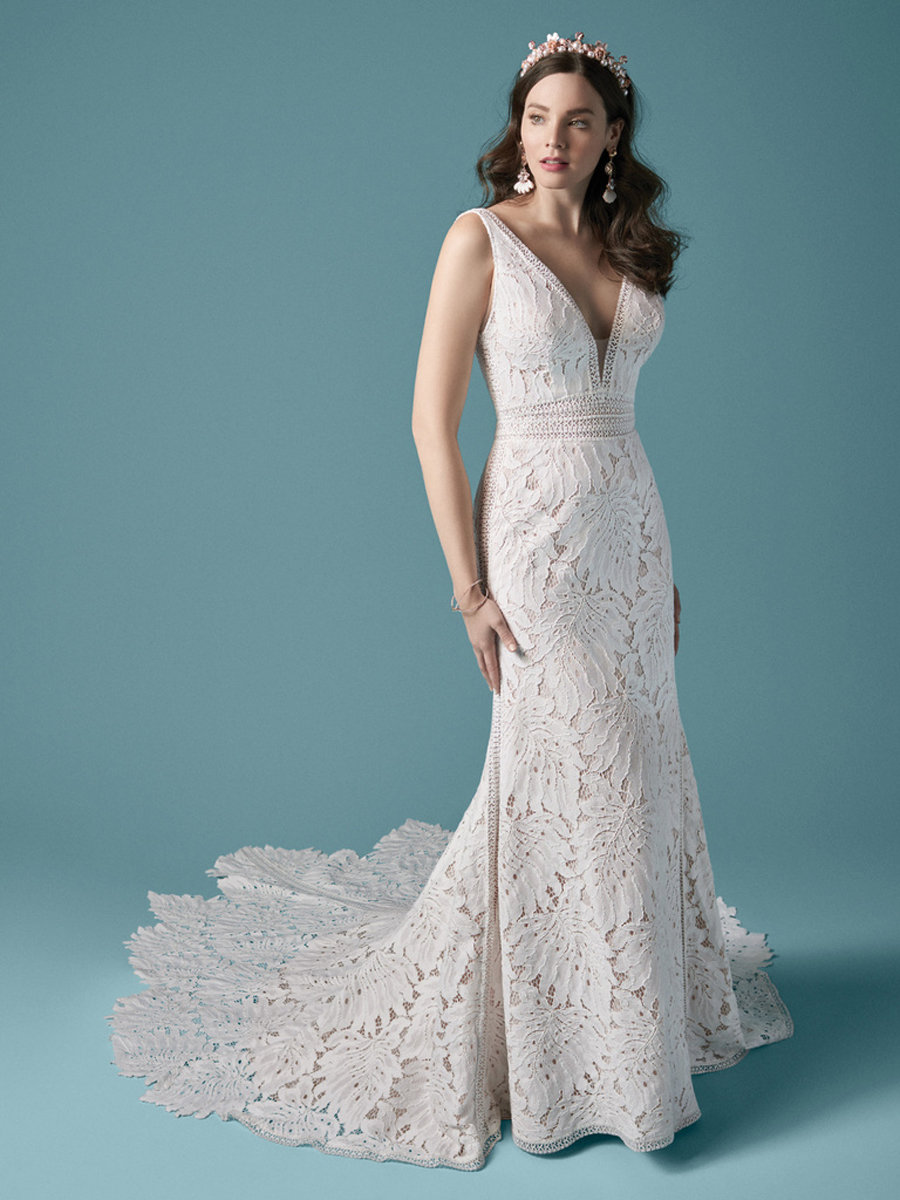





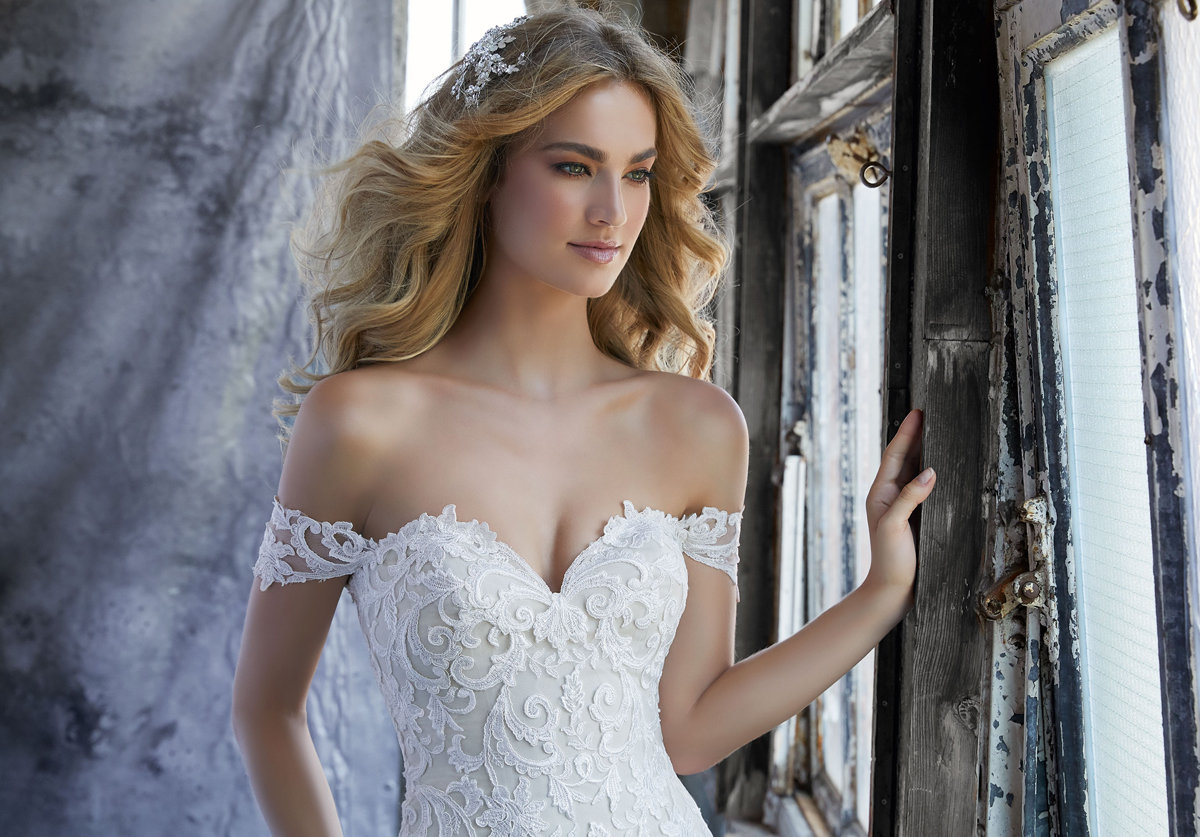
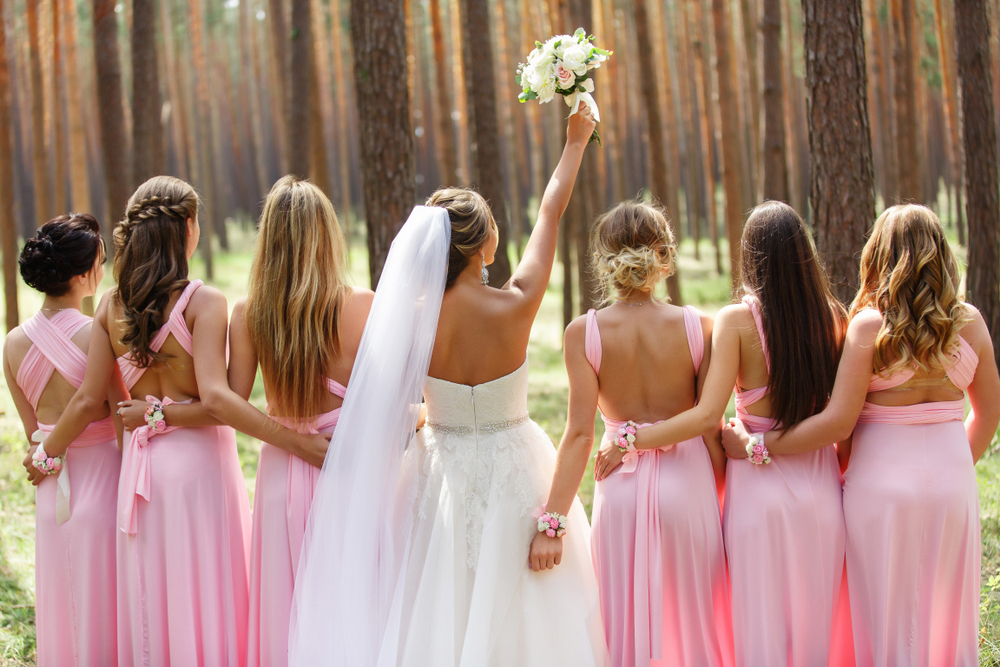
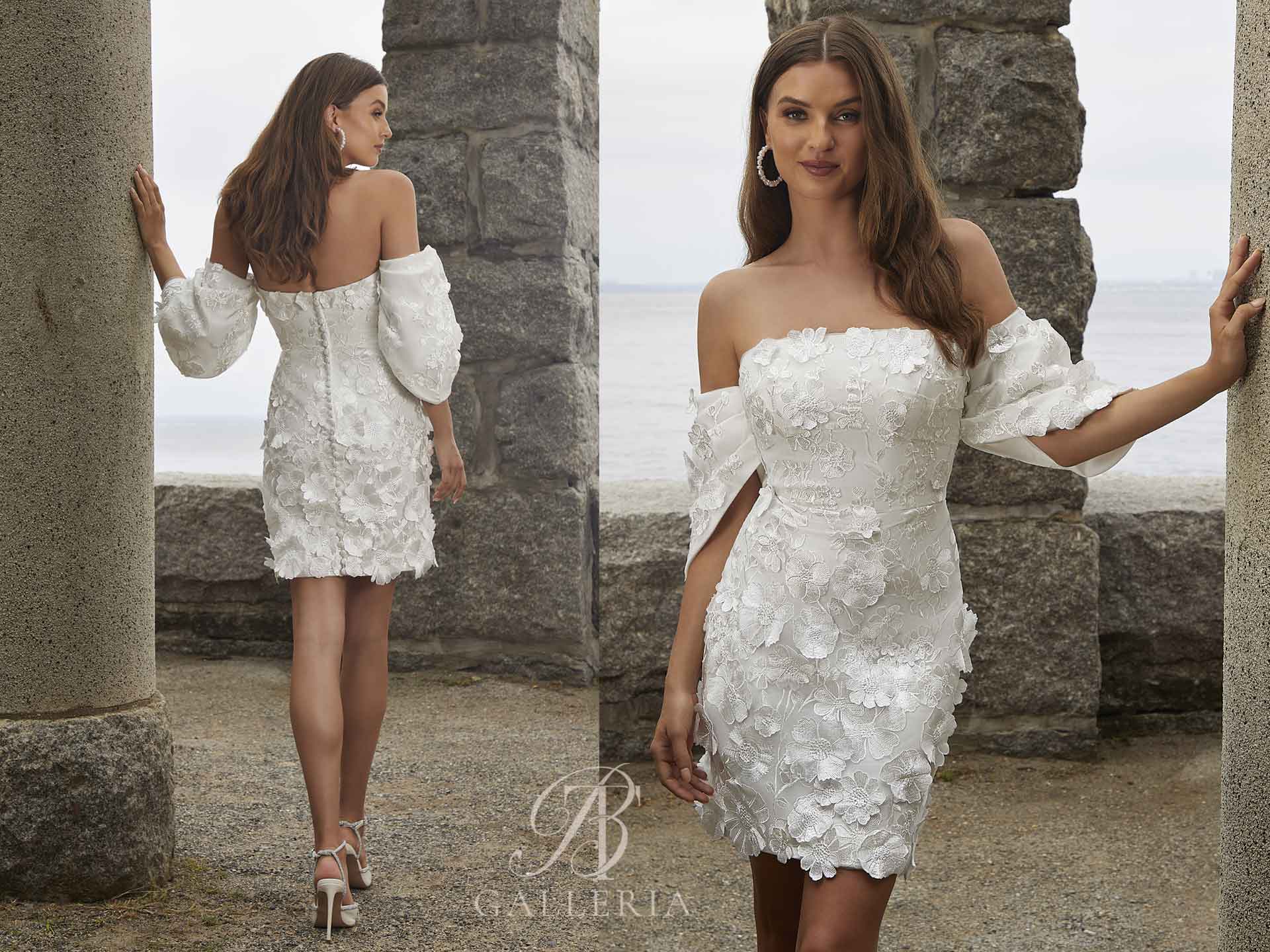


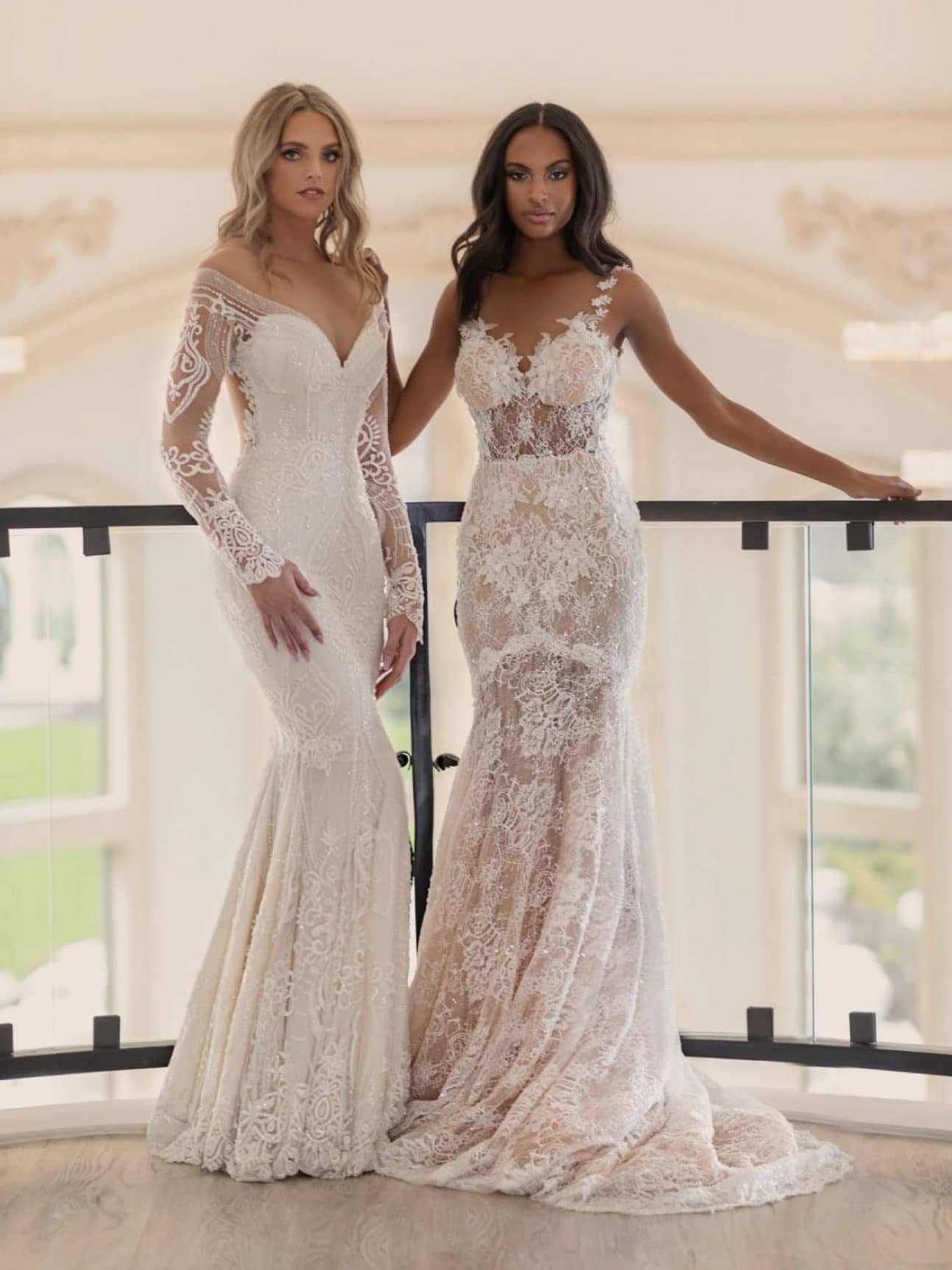
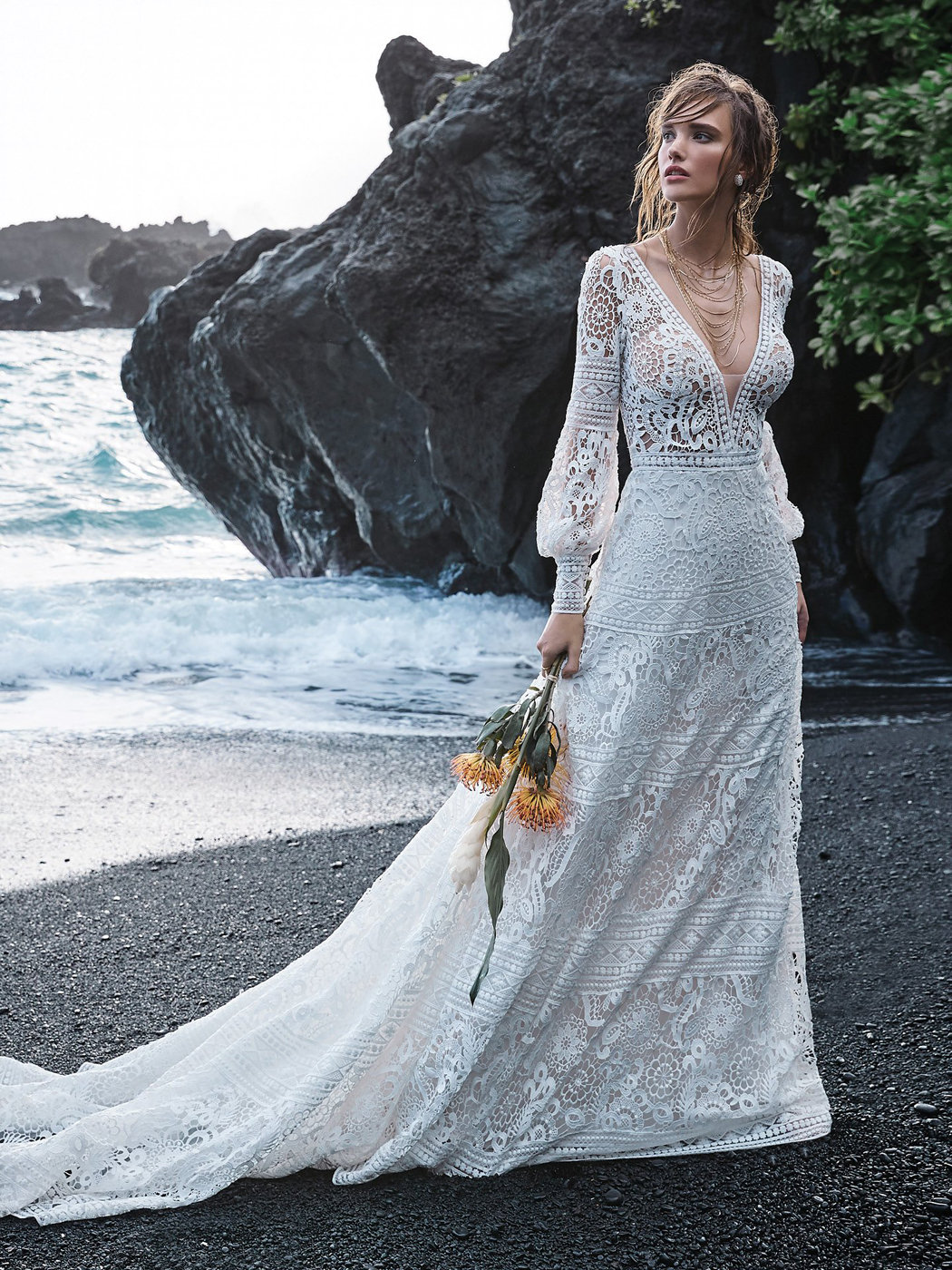

Leave a Reply